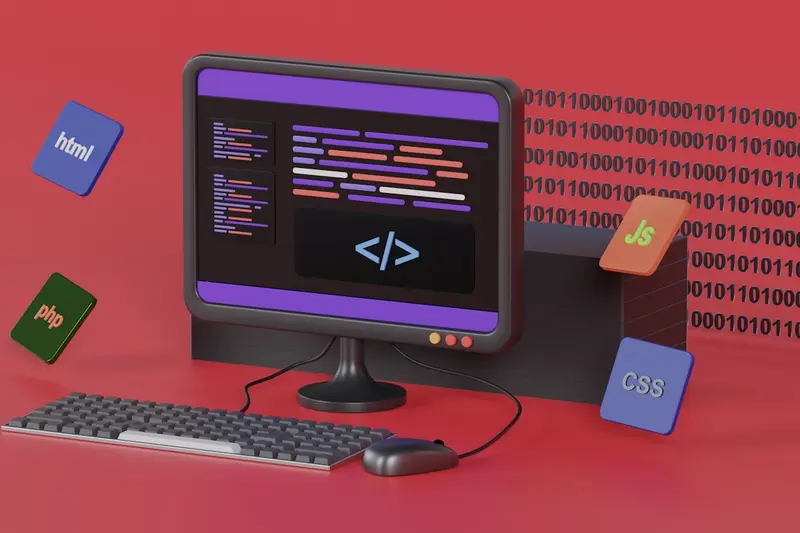Diagnosing Boot Problems in Alpine Linux
Boot problems can be frustrating, but with systematic diagnosis, most issues can be resolved. Let’s learn how to identify and fix common boot problems in Alpine Linux! 🚀
Understanding Alpine Linux Boot Process
The boot sequence:
- BIOS/UEFI: Hardware initialization
- Bootloader: GRUB or syslinux loads
- Kernel: Linux kernel initializes
- initramfs: Initial RAM filesystem
- Init System: OpenRC starts services
- Login: System ready for use
Common Boot Problems
Typical issues include:
- Bootloader failures: GRUB errors
- Kernel panics: System crashes during boot
- Missing initramfs: Can’t find boot files
- File system errors: Corrupted partitions
- Service failures: Critical services won’t start
- Hardware issues: Disk or memory failures
Step 1: Initial Diagnosis
Boot to Recovery Mode
# At GRUB menu, press 'e' to edit
# Add to kernel line:
single init=/bin/sh
# Or boot with rescue media
# Download Alpine extended ISO
# Boot from USB/CDCheck Boot Messages
# During boot, remove 'quiet' parameter
# Press ESC to see messages
# After boot (if successful)
dmesg | less
dmesg | grep -i error
dmesg | grep -i failStep 2: Bootloader Issues
GRUB Problems
# Boot from rescue media
# Mount root partition
mount /dev/sda2 /mnt
mount /dev/sda1 /mnt/boot
# Chroot into system
mount --bind /dev /mnt/dev
mount --bind /proc /mnt/proc
mount --bind /sys /mnt/sys
chroot /mnt
# Reinstall GRUB
grub-install /dev/sda
grub-mkconfig -o /boot/grub/grub.cfg
# Fix GRUB configuration
nano /etc/default/grubCommon GRUB fixes:
# /etc/default/grub
GRUB_DEFAULT=0
GRUB_TIMEOUT=5
GRUB_CMDLINE_LINUX_DEFAULT="quiet"
GRUB_CMDLINE_LINUX=""
# For troubleshooting
GRUB_CMDLINE_LINUX_DEFAULT=""
GRUB_TERMINAL=consoleSyslinux Problems
# For syslinux systems
# Mount boot partition
mount /dev/sda1 /mnt
# Check syslinux configuration
cat /mnt/syslinux/syslinux.cfg
# Reinstall syslinux
syslinux --install /dev/sda1
# Update MBR
dd if=/usr/share/syslinux/mbr.bin of=/dev/sda bs=440 count=1Step 3: Kernel and initramfs Issues
Regenerate initramfs
# Update initramfs
mkinitfs
# List available kernels
ls /lib/modules/
# Generate for specific kernel
mkinitfs -k 5.15.75-0-lts
# With specific features
mkinitfs -F "ata base ide scsi usb virtio ext4"
# Check initramfs contents
lsinitramfs /boot/initramfs-ltsKernel Module Issues
# List loaded modules
lsmod
# Check module dependencies
modprobe --show-depends module_name
# Force load module
modprobe -f module_name
# Blacklist problematic module
echo "blacklist module_name" >> /etc/modprobe.d/blacklist.confStep 4: File System Problems
Check and Repair File Systems
# Boot from rescue media
# Check root filesystem
fsck -f /dev/sda2
# Force check on ext4
e2fsck -f /dev/sda2
# Check all filesystems
fsck -A
# For btrfs
btrfs check /dev/sda2
btrfs check --repair /dev/sda2Mount Issues
# Check fstab for errors
cat /etc/fstab
# Test mount
mount -a
# Mount with specific options
mount -o ro,noload /dev/sda2 /mnt
# Check UUID
blkid
ls -l /dev/disk/by-uuid/Step 5: Hardware Diagnostics
Memory Testing
# Install memtest86+
apk add memtest86+
# Add to GRUB
cat >> /etc/grub.d/20_memtest86+ << 'EOF'
#!/bin/sh
set -e
. /usr/share/grub/grub-mkconfig_lib
if [ -f /boot/memtest86+.bin ]; then
MEMTEST86="/boot/memtest86+.bin"
printf "menuentry \"Memory test (memtest86+)\" {\n"
printf "\tlinux16 %s\n" "${MEMTEST86}"
printf "}\n"
fi
EOF
chmod +x /etc/grub.d/20_memtest86+
grub-mkconfig -o /boot/grub/grub.cfgDisk Health Check
# Install smartmontools
apk add smartmontools
# Check disk health
smartctl -H /dev/sda
# Run full test
smartctl -t long /dev/sda
# Check test results
smartctl -a /dev/sda
# Check for bad blocks
badblocks -v /dev/sdaStep 6: Boot Logging and Debugging
Enable Verbose Boot
# Remove quiet from kernel parameters
# Edit GRUB configuration
nano /etc/default/grub
# Change:
GRUB_CMDLINE_LINUX_DEFAULT=""
# Add debug options:
GRUB_CMDLINE_LINUX="debug initcall_debug"
# Update GRUB
grub-mkconfig -o /boot/grub/grub.cfgConfigure Boot Logging
# Enable bootlog service
rc-update add bootlog boot
# Configure console logging
echo "rc_logger=\"YES\"" >> /etc/rc.conf
echo "rc_log_path=\"/var/log/rc.log\"" >> /etc/rc.conf
# Enable kernel logging
echo "kern.* /var/log/kernel.log" >> /etc/rsyslog.confStep 7: Service Boot Issues
Debug OpenRC Services
# Check service status
rc-status -a
# List failed services
rc-status -c
# Start service manually with debug
/etc/init.d/service_name start --debug
# Check service dependencies
rc-update -v show
# Reset service state
rm /run/openrc/started/service_name
rm /run/openrc/failed/service_nameFix Common Service Issues
# Networking service failure
# Check network configuration
cat /etc/network/interfaces
# Start networking manually
ifup -a
# Database service failure
# Check permissions
ls -la /var/lib/mysql/
chown -R mysql:mysql /var/lib/mysql/
# Clear service cache
rm -rf /run/openrc/cache/*Step 8: Recovery Procedures
Create Recovery Script
#!/bin/sh
# Alpine Linux Boot Recovery Script
echo "=== Alpine Linux Boot Recovery ==="
echo "1. Check filesystems"
echo "2. Rebuild initramfs"
echo "3. Reinstall bootloader"
echo "4. Fix network configuration"
echo "5. Reset root password"
echo "6. Exit"
read -p "Select option: " choice
case $choice in
1)
echo "Checking filesystems..."
fsck -A -y
;;
2)
echo "Rebuilding initramfs..."
mkinitfs
;;
3)
echo "Reinstalling bootloader..."
grub-install /dev/sda
grub-mkconfig -o /boot/grub/grub.cfg
;;
4)
echo "Resetting network..."
cat > /etc/network/interfaces << 'EOF'
auto lo
iface lo inet loopback
auto eth0
iface eth0 inet dhcp
EOF
;;
5)
echo "Resetting root password..."
passwd root
;;
6)
exit 0
;;
esacEmergency Boot Options
# Boot with minimal services
# Add to kernel line:
rc_parallel=no
rc_interactive=yes
# Boot to single user mode
# Add to kernel line:
single
# Boot with specific init
# Add to kernel line:
init=/bin/sh
# Skip filesystem check
# Add to kernel line:
fastboot
# Force filesystem check
# Add to kernel line:
forcefsckStep 9: Preventive Measures
Create Boot Backup
#!/bin/sh
# Backup boot configuration
BACKUP_DIR="/root/boot-backup"
DATE=$(date +%Y%m%d)
mkdir -p $BACKUP_DIR
# Backup boot files
tar -czf $BACKUP_DIR/boot-$DATE.tar.gz /boot/
# Backup configuration
tar -czf $BACKUP_DIR/etc-$DATE.tar.gz \
/etc/fstab \
/etc/default/grub \
/etc/mkinitfs/ \
/etc/modprobe.d/
# Save partition info
fdisk -l > $BACKUP_DIR/partitions-$DATE.txt
blkid > $BACKUP_DIR/blkid-$DATE.txt
echo "Boot backup completed: $BACKUP_DIR"Monitor Boot Health
#!/bin/sh
# Boot health check script
echo "=== Boot Health Check ==="
echo "Date: $(date)"
# Check boot partition space
echo -e "\nBoot partition usage:"
df -h /boot
# Check for kernel updates
echo -e "\nInstalled kernels:"
ls /boot/vmlinuz-* | wc -l
# Check initramfs dates
echo -e "\ninitramfs files:"
ls -la /boot/initramfs-*
# Check for errors in boot log
echo -e "\nRecent boot errors:"
dmesg | grep -i error | tail -5
# Check service failures
echo -e "\nFailed services:"
rc-status -cStep 10: Advanced Troubleshooting
Kernel Panic Analysis
# Capture kernel panic
# Add to kernel line:
panic=30 crashkernel=128M
# Configure kdump
apk add kexec-tools
rc-update add kdump boot
# Analyze panic
# Look for:
# - Call trace
# - RIP (instruction pointer)
# - Stack dumpBoot Performance Analysis
# Install bootchart
apk add bootchart2
# Enable bootchart
# Add to kernel line:
initcall_debug printk.time=y init=/sbin/bootchartd
# Generate report
bootchart2 -o bootchart.png
# Analyze systemd-bootchart (if using systemd)
systemd-analyze
systemd-analyze blame
systemd-analyze critical-chainStep 11: UEFI-Specific Issues
UEFI Boot Repair
# Check UEFI variables
efibootmgr -v
# Create new boot entry
efibootmgr -c -d /dev/sda -p 1 -l \\EFI\\alpine\\grubx64.efi -L "Alpine Linux"
# Remove boot entry
efibootmgr -b 0001 -B
# Set boot order
efibootmgr -o 0001,0002,0003
# Mount EFI partition
mount -t vfat /dev/sda1 /boot/efiSecure Boot Issues
# Check Secure Boot status
mokutil --sb-state
# Disable Secure Boot (in BIOS/UEFI)
# Or sign bootloader
sbsign --key db.key --cert db.crt --output grubx64.efi grubx64.efi.unsigned
# Enroll keys
mokutil --import my-signing-key.derStep 12: Create Custom Recovery ISO
# Create custom recovery ISO with tools
# Install required packages
apk add alpine-sdk xorriso syslinux
# Create working directory
mkdir -p ~/recovery-iso/{boot/syslinux,tools}
# Copy kernel and initramfs
cp /boot/vmlinuz-lts ~/recovery-iso/boot/
cp /boot/initramfs-lts ~/recovery-iso/boot/
# Add recovery tools
cat > ~/recovery-iso/tools/recovery.sh << 'EOF'
#!/bin/sh
# Custom recovery script
echo "Alpine Linux Recovery Environment"
# Add recovery commands here
EOF
# Create ISO
xorriso -as mkisofs \
-o alpine-recovery.iso \
-b boot/syslinux/isolinux.bin \
-c boot/syslinux/boot.cat \
-no-emul-boot \
-boot-load-size 4 \
-boot-info-table \
~/recovery-iso/Common Boot Error Messages
Error Solutions
-
“No bootable device”
- Check BIOS boot order
- Verify bootloader installation
- Check disk connections
-
“Kernel panic - not syncing”
- Check initramfs
- Verify root device
- Test memory
-
“Cannot find root device”
- Check fstab UUIDs
- Verify disk detection
- Update initramfs
-
“Failed to start service”
- Check service logs
- Verify dependencies
- Run service manually
Best Practices
- Regular Backups: Keep boot configuration backed up
- Test Changes: Test in VM before production
- Document Changes: Keep boot configuration documented
- Monitor Logs: Regular log checking
- Update Carefully: Test kernel updates
- Keep Recovery Media: Always have rescue USB/CD
- Hardware Monitoring: Regular health checks
Conclusion
You now have comprehensive knowledge for diagnosing and fixing boot problems in Alpine Linux! Key skills include:
✅ Understanding boot process ✅ Diagnosing bootloader issues ✅ Fixing kernel and initramfs problems ✅ Resolving filesystem errors ✅ Hardware troubleshooting ✅ Creating recovery procedures
Remember: Systematic diagnosis is key to solving boot problems. Always keep recovery media ready! 🔧




